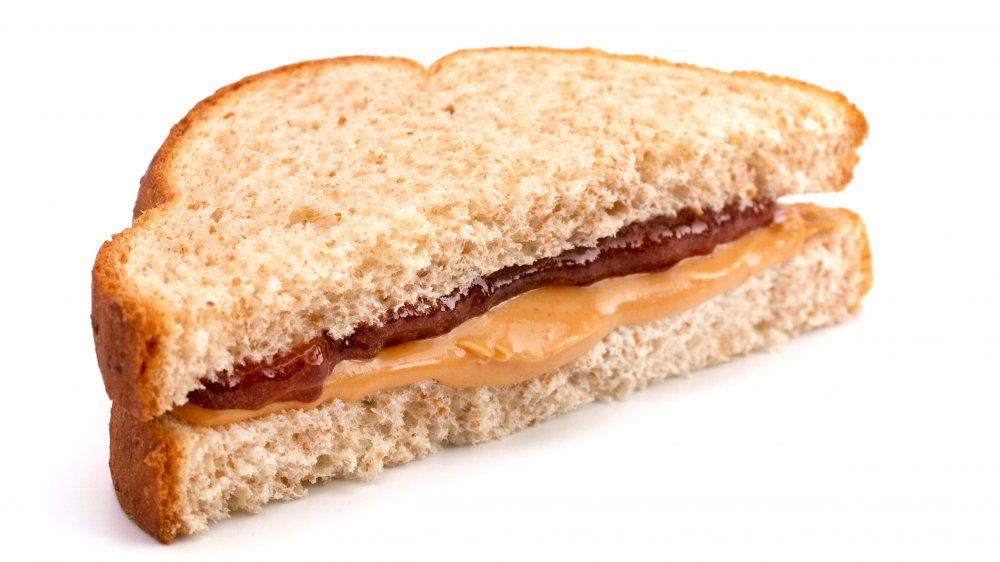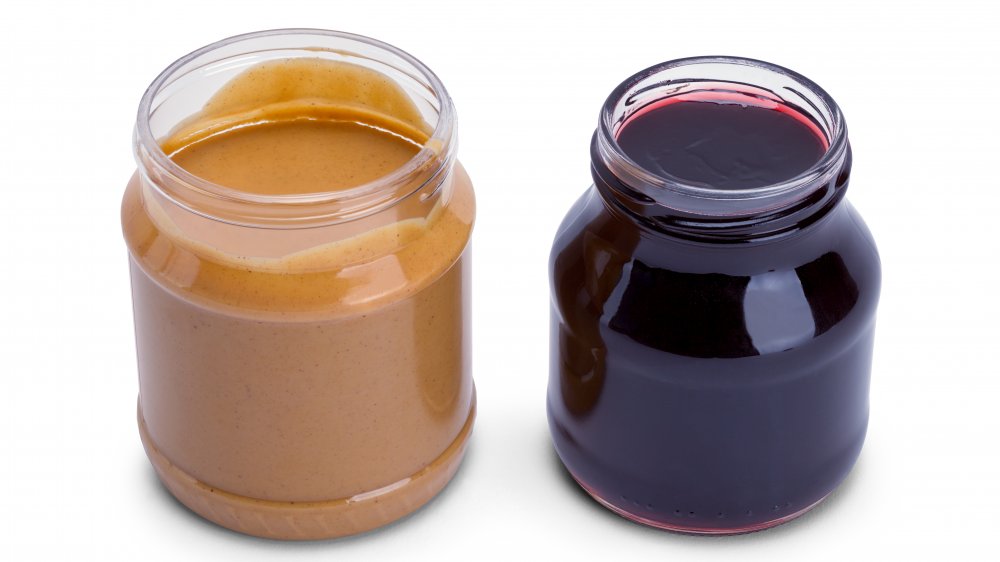The Strange Origin Story Of The PB&J
If you're American, odds are you grew up eating peanut butter and jelly sandwiches. The acronym PB&J conjures up memories of school cafeterias, scraped knees, and sack lunches. This classic combination seems like an obvious match, but PB&J is actually a much more recent invention that you would think.
Peanut butter itself, in some form or another, has been around for a really long time. According to the National Peanut Board, the earliest form of a peanut butter-like substance dates back to the Ancient Incas and Aztecs, who would grind peanuts into a paste. That was a far cry from the peanut butter we eat these days, though.
While George Washington Carver is often credited with the invention of peanut butter, that's not actually the case. The precursor to our modern-day peanut butter was first invented by Marcellus Gilmore Edson in the late 1800s, followed by Dr. John Harvey Kellogg (yes that Kellogg), who obtained a patent for a special peanut butter making process, and finally, Dr. Ambrose Straub patented a specific machine that would make peanut butter.
Peanut butter was officially introduced at the 1893 Chicago World Fair. The spread made a second appearance at the 1904 St. Louis World Fair after Dr. Straub had successfully found a company to produce his peanut butter to sell to grocery stores across the United States.
The late 1880s also saw peanut butter sandwiches showing up on tea room menus in New York City, but not paired with any spreads you might expect (via National Peanut Board). At the time, peanut butter sandwiches featured either watercress or pimentos as the partner to the salty nut paste.
Peanut butter sandwiches were once considered fancy
The first mention of a peanut butter and jelly sandwich comes from the Boston Cooking School Magazine of Culinary Science and Domestic Economics in 1901. In their recipe, author Julia Davis Chandler paired peanut butter with not grape or strawberry jelly, but with currant or crabapple. Davis Chandler stated that this flavor combination was, as far as she knew, the original way to make PB&J.
The food remained an upscale, exclusive menu item until the introduction of both pre-sliced bread and commercial peanut butters that were less gummy and sticky than the original peanut pastes. During the Great Depression, peanut butter sandwiches (sans jelly) became popular with families as they were something children could make themselves easily and were low cost.
How Stuff Works credits World War II for bringing the now-classic combination of peanut butter and jelly together. They state that, along with peanut butter and sliced bread, jelly was part of the U.S. soldiers' rations. Once they returned from the war, many soldiers began craving the sweet and salty combination they had grown so used to, and sought to share the food with their families. Whether you're a classic (smooth peanut butter grape jelly) or a maverick (crunchy peanut butter strawberry jam,) we can all agree the duo has won a well-deserved spot in the official canon of American cuisine.

